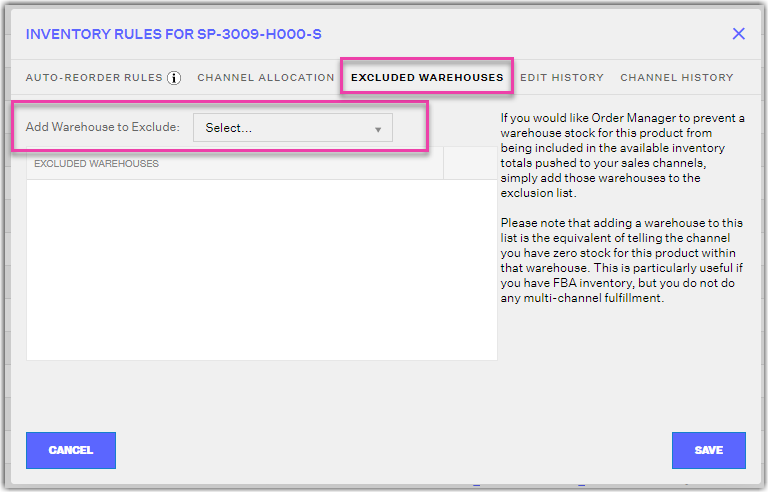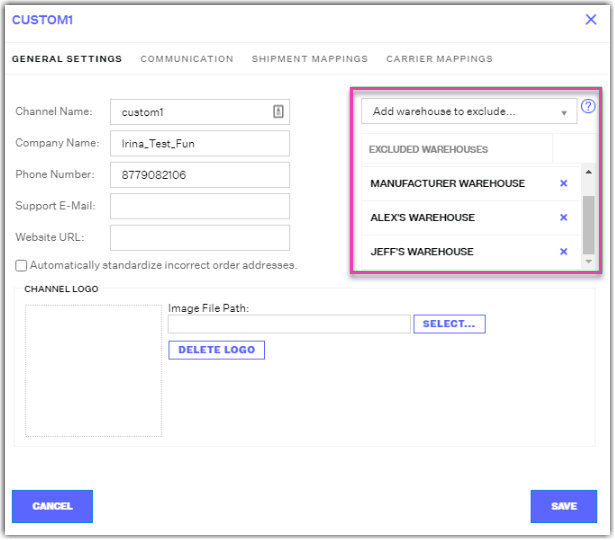How to Update Inventory Through the Extensiv Order Manager API
1.1 min read
|Before getting into the API-specific part, it's important to understand some concepts in Extensiv Order Manager that will make your development easier. Extensiv Order Manager has a feature called Channel Allocation Rules. These rules control how much available inventory is displayed for each sales channel, whether it's a channel Extensiv Order Manager integrates with natively or a channel we connect through a 3rd party app.
The rules can get pretty complex. For starters, Extensiv Order Manager allows sellers to display a certain % of available inventory, or a specificamount of units (called Max Allocation), for each product and sales channel. These rules can change once minimum inventory levels are reached (see the "Min. Rule Type" in the screenshot above). This is important because reaching the minimum inventory level is a danger zone for most sellers so Extensiv Order Manager can prevent overselling using channel allocation rules to reduce the risk of marketplace suspension.
You can also exclude inventory at the product level or sales channel level so that inventory from a specific warehouse is not included in the inventory pushed to the sales channels.
Below is an example of where to exclude inventory from specific warehouses from being included in the amount of available inventory at the product level that's being pushed to the sales channels.
Below is an example of where to exclude warehouses at the sales channel level so inventory from those warehouses are not pushed to the sales channel.

These rules provide Extensiv Order Manager users with greater control over their inventory and help prevent overselling.
The [POST] /service/v1.2/inventory/acknowledge endpoint allows you to retrieve recently modified inventory values for listings for specific channels.
This endpoint only returns inventory for products where stock levels have changed since the last time you hit the endpoint, allowing you to easily access up-to-date inventory levels.
To learn more about API Endpoints, please go to the Order Manager API page.
